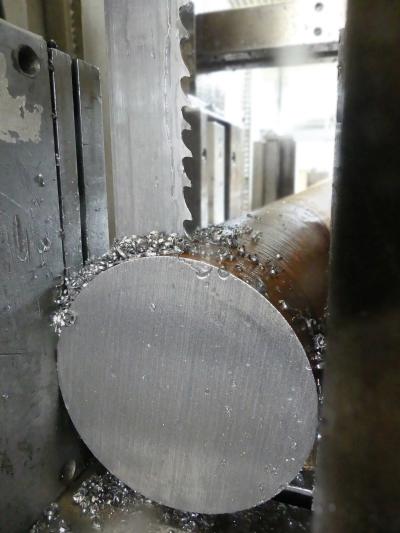
Bahco is expanding its bandsaw blade portfolio with the debut of the world’s first trimetal bandsaw blade. The Bahco 3859 Easy-Cut Xtreme Trimetal Bandsaw Blade offers users an easier, wider-ranging and faster cut with a longer-lasting blade life.
Bahco is a world leader in the bandsaw market with more than 140 years of experience manufacturing saw blades and cutting tools. The company is renowned for its research and innovation efforts that ensure they stay ahead of the curve, which lead to the development of its new trimetal carbide bandsaw blade.
The 3859 can cut a much wider array of materials, including structural and mild steels, stainless steels, cast iron, high temperature alloys and tool steels. Its unique set pattern provides a greater range of cutting widths, bringing greater application potential and increased productivity.
The 3859 Easy-Cut Xtreme Trimetal Bandsaw Blade cuts “easy to cut” materials and difficult materials with the same blade; there is no need to change blades. This saves time and money by reducing blade inventory, operator labor and machine downtime. The 3859 also boasts a much longer blade life than bimetal blades. Its enhanced durability also means the blade can cut faster when needed.
Because the trimetal blade uses the same parameters as bimetal blades, there is no need to break in the blade. The 3859 comes direct from our factory already honed with a patented edge preparation. This is our best multi-application out-of-the-box bandsaw blade yet.
Contact Details
Related Glossary Terms
- alloys
alloys
Substances having metallic properties and being composed of two or more chemical elements of which at least one is a metal.
- bandsaw
bandsaw
Machine that utilizes an endless band, normally with serrated teeth, for cutoff or contour sawing. See saw, sawing machine.
- bandsaw blade ( band)
bandsaw blade ( band)
Endless band, normally with serrated teeth, that serves as the cutting tool for cutoff or contour band machines.
- edge preparation
edge preparation
Conditioning of the cutting edge, such as a honing or chamfering, to make it stronger and less susceptible to chipping. A chamfer is a bevel on the tool’s cutting edge; the angle is measured from the cutting face downward and generally varies from 25° to 45°. Honing is the process of rounding or blunting the cutting edge with abrasives, either manually or mechanically.
- sawing machine ( saw)
sawing machine ( saw)
Machine designed to use a serrated-tooth blade to cut metal or other material. Comes in a wide variety of styles but takes one of four basic forms: hacksaw (a simple, rugged machine that uses a reciprocating motion to part metal or other material); cold or circular saw (powers a circular blade that cuts structural materials); bandsaw (runs an endless band; the two basic types are cutoff and contour band machines, which cut intricate contours and shapes); and abrasive cutoff saw (similar in appearance to the cold saw, but uses an abrasive disc that rotates at high speeds rather than a blade with serrated teeth).
- stainless steels
stainless steels
Stainless steels possess high strength, heat resistance, excellent workability and erosion resistance. Four general classes have been developed to cover a range of mechanical and physical properties for particular applications. The four classes are: the austenitic types of the chromium-nickel-manganese 200 series and the chromium-nickel 300 series; the martensitic types of the chromium, hardenable 400 series; the chromium, nonhardenable 400-series ferritic types; and the precipitation-hardening type of chromium-nickel alloys with additional elements that are hardenable by solution treating and aging.
- tool steels
tool steels
Group of alloy steels which, after proper heat treatment, provide the combination of properties required for cutting tool and die applications. The American Iron and Steel Institute divides tool steels into six major categories: water hardening, shock resisting, cold work, hot work, special purpose and high speed.

